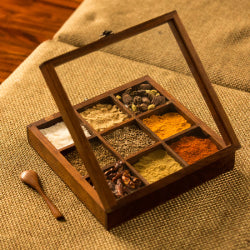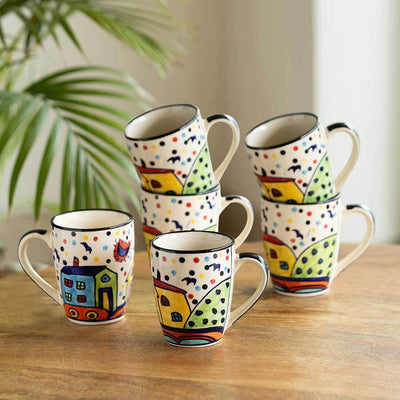Mughal Era Through The Lens of Art and Paintings
Paintings are a true reflection of humankind. From the stone age to modern times, we can see the reminiscing of history and understand human life of that period better than books can ever tell us. It is said that paintings are from within, and thus, it acts as a window to the polycentric and polysemic aspects of the civilisation at that time. Art and paintings carry more truth than what we perceive, and it has always been an inspiration pool for many creativity, adapted in modern times.

India has always been known for its rich heritage and culture. The second populous country truly showcases a civilisation of unity in diversity. From the times of the Indus Valley civilisation and Harappan Civilisation, India has always been way ahead in art, painting and culture. Every era and empire had a specific influence on art and architecture. For instance, during the Mauryan Empire, we had stupas, pillars and statues that reflect Jainism, Buddhism and Hinduism. Although people mostly prefered Pali as a language to speak, their court arts and paintings have also shown traces of Arabic and Greek, showing us the different aspects of international trade influence in the Mauryan Empire, especially emigration in the Third BCE.

But one of the most talked-about periods of Indian history is the Mughal Era from 16th to 18th century. The rich colours and miniature paintings are quite famous globally. Many modern artists have taken inspiration from unique designs to create modern art creatives, including artisanal products.
Through the Mughal Art and Paintings history, you will see how distinctively the painting changed throughout the Mughal Era according to the emperors. They mostly were based upon miniatures and had a fine Persian influence.
So what’s the difference between Persian Art and Mughal art and paintings?
Well, during the 10th century, we have already seen the Persian art influence in India during the Delhi Sultanate. But in the 12th century, it was during Humayun’s time when we saw how his Persian painters started taking Indian elements in their paintings, thus giving them distinct originality. Hence, the “Mughal Art Era” took birth and reverberated globally till the 18th century.
Before we understand the Mughal Paintings, let’s dive into knowing what we learn from them about their era!
Features of Mughal Art
-
Royal Courtroom Drama
We can say that Mughal Art was only for emperors and aristocrats. Most of their art was confined to royal courts. Even though you can see that the painters have created a fine synthesis of Indian art and Persian art, their paintings tell a different story.
The paintings mostly talk about the culture of the court. We do not see any commoners in them. Maybe that’s why their culture remained unknown to most Indian Subcontinent.
-
A Harsh Reality of Women
There are thousands of Mughal paintings, but sadly, we do not see women much, especially in courts. Some paintings showcase the courtesans and their big, royal houses where they entertain the aristocrats. But the paintings also show that women had an almost negligible say in royal politics and were never assigned any significant roles in the royal court.

-
Gold: Mughal Paintings’ colour!
Gold and hues of yellow and orange are the most prominent colours that you can see in Mughal art and paintings. Gold was used the most, whether a miniature on a small paper or a wall hanging. This is because gold represents royalty, and Mughals wanted to show despotism and create a historic mark.

-
Lover of Nature
A striking element that you can see almost in every other painting, like Khamsa of Nizami, is trees, flowers and lush green forests. These have been used mostly in folklore and mythologies. You won’t find this feature during Akbar’s era, but historians believe that Jahangir has a great taste in arts and culture. He was a nature lover, and thus, we see such great Nature influence in paintings and art during his period.
You can even read : Ethnic Indian Art Styles making their way into modern homes
Inspiration: Mughal Era
The paintings and sculptures of the Mughal Era have inspired generations after generations. Today, in the modern era, when people are becoming more aware of their rich cultural history, we are trying our best to preserve the art in any form possible.
We come across many art pieces in the modern era derived or inspired by our ancient cultures. One famous era is the Mughal Era which artists and artisans find delightful and rich.
ExclusiveLane brings you a vast collection of modern household pieces with artworks richly inspired by the Mughal Era, especially the Jahangir Era.
If you are someone who loves history and has a knack for collecting art pieces, then you should check our ceramic kitchen wares like Mughal Bageecha and Mughal rims. These have the Naturalism Mughal miniature art, which gives an aesthetic appeal.
Suppose you are someone who loves simplicity and minimalist designs. Then check out our Mughal Marvels. We have tried our best to replicate the true essence of marvel's work in this collection. These are simple yet have intricate handiworks, which adds the pizzaz to the whole piece.
India has a rich heritage, and ExclusiveLane is trying to revive the culture with a dash of contemporary designs. We travel across regions and states through unknown and various lanes to understand the less known design and art and showcase it to you in a modern way.
Check out the ExclusiveLane handicraft store now!






Very Well Written about thanks for sharing such useful
you can check out our website for an online course on such information
https://online.penkraft.in/OnlineCourseDetail/AlcoholInkArt
Leave a comment